Human Flower Project
Iris stocksii: Your Day Is Coming
Alpine horticulturists around the world, including Allen Bush, wait with excitement as cultivation of a rare Juno iris, collected in Afghanistan, begins.
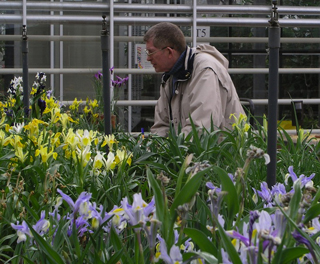
Tony Hall working on a frame of Juno Iris
Royal Botanic Gardens at Kew, 2009
Photo: Jim Almond
By Allen Bush
I spent one sleepless hour after another on my London flight in late May walking the aisle while staring at an unconscious planeload. I tried to play catch-up. Two glasses of airline wine and an Ambien didn’t do a bit of good. A day later I came calling on Tony Hall cross-eyed with jet lag. Sleep walking for a couple of hours around the Royal Botanic Gardens at Kew seems now like a dream—full of memories of a friend.
I tumbled out of the car on Kew Road at Primrose House and graciously agreed to be picked-up sooner or later. Later preferred. I feared sooner since neither Kew Gardens nor precious time with Tony Hall should be done on the fly. Hall has retired – sort of. He was for nearly thirty years the Manager of Kew’s Alpine Unit, caring the alpine plants and bulbs and overseeing the Alpine House and Woodland Garden. Hall, renowned for his knowledge of Iris, is the leading authority on Juno Iris and working toward a botanic monograph. Kew continues to provide facilities for Hall’s Juno Project.
Tony buzzed me in and was eager to get moving. A special package had just arrived: four bulbs and nearly fifty seeds of the very rare Iris stocksii.
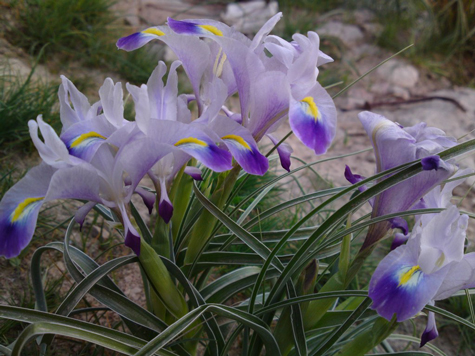
Iris stocksii, a rare and genetically mysterious Juno iris, in its native Afghanistan
Photo: Juan Piek
Juan Piek, a South African, working for Security Forces in Afghanistan, found the Juno Iris in Kajaki, Helmand Province, and told Hall that he would put the collection in the mail. A month went by and Tony worried that it had gotten lost, but, fortunately, Piek had waited until he was safely home before posting the rare species. Piek was, according to Hall, “…a lover of plants, especially Proteas…not especially Junos.”
In a battled scarred desert landscape, Piek ran the risk of landmines and avoided the crosshairs of feuding warlords and resurgent local terrorist networks. At stake in Helmand is the rich opium crop. 40% of the world’s production comes from the Province, an area described by the New York Times as: ”…Afghanistan’s most dangerous land.” (Take a look at this video.)
There may soon be a land rush there, too, since an internal Pentagon memo recently suggested Afghanistan might become the “Saudi Arabia of lithium.” (Lithium is used to power laptops.) General Petraeus, Commander of U.S. Central Command (and just recently promoted), cited this vast reserve and other rich mineral deposits for its “stunning potential.”
Not quite lost in this land grab has been Piek’s prize, Iris stocksii, whose vital DNA is being mapped at Kew. The “stunning potential” of this species will soon power-up the fertile imaginations of a few talented botanists, molecular scientists and horticulturists, and, worldwide, there’s a handful of us who can’t wait to see what happens. We may have to wait awhile.
Tony Hall will try to try to mimic conditions indigenous to the dry, stony slopes of central and southern Afghanistan and neighboring Baluchistan, around Quetta, in western Pakistan—an elevation range between 1150-2700 m (3,773’ – 8858’). He’ll grow the Iris in special glass frames for many years to come, trying to coax them into bloom. In nature, Iris stocksii endures cold, dry winters and emerges with spring snowmelt, or the first rains, between March and April. After producing seeds, the plants soon go dormant again, surviving the intense summer heat(45 c /113 F) and prolonged dry period with the aid of fleshy roots and bulbs.
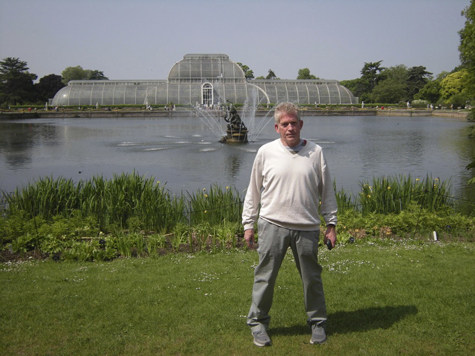
Longtime manager of Kew’s Alpine Unit Tony Hall (shown here before the Palm House, May 2010) is working on a monograph about Juno Iris, his specialty.
Photo: Allen Bush
Hall was chomping at the bit. He wanted to hand deliver the parcel to Kew’s Jodrell Laboratory, where Dr. Mark Chase, one of the world’s leading molecular scientists, would conduct a DNA analysis and add his findings to the matrix for junos. “Iris stocksii is such an important and morphologically unusual iris,” Hall emphasized. “It must be added to the tree.” We crossed the street into the gardens through the Shaft Yard Gate and wandered toward the Jodrell, past the Palm House and into the rock garden. We paused at the luxuriant, blue- flowering Iris cycloglossa. This tuberous, clove-scented species, native to Herat Province in Northwest Afghanistan, is more receptive to garden cultivation, perhaps because it grows in moist meadows, which is not usually the case with Junos. Tony told me it had – just the day before—been awarded the Royal Horticultural Society’s distinguished First Class Certificate at the Chelsea Flower Show. This was turning-out to be a big week for Juno Iris.
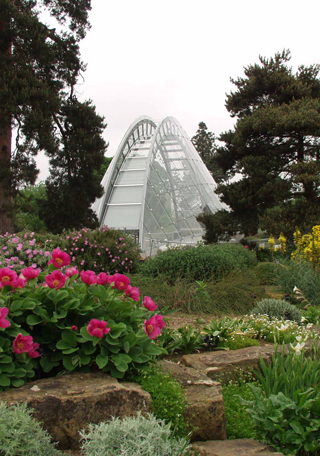 The new Alpine House at Kew
The new Alpine House at Kew
Photo: Richard Wilford
Just beyond the rock garden we stopped at the new Alpine House. The previous “new” Alpine House had been completed in 1979, when I was an International Trainee. Now it’s gone. (It seemed like only yesterday!) The Jodrell needed more room. Tony muttered something about missing the past two Alpine Houses (the earlier version, next to the Order Beds, now holds a bonsai collection). Tony, nostalgic for the past, shook his head and said great things had been accomplished in both these old alpine houses.
“I heard that, “ Kate Price barked back. Kate is growing good things, too. She is the Team Leader for the Alpine House and Woodland Garden. Tony knows Price is growing good things and tells me quietly, but not so she can hear. Price has just returned from North Carolina, a study trip not far from where I had been in the north Georgia mountains just a few weeks before. Tony Hall began getting antsy and excused himself, delivering the goods to Mark Chase at the Jodrell while I lingered in the Alpine House.
Kate Price, while hand watering, climbing among the landscaped rocks, looked over species that are a world apart from the temperate woodland plants of the Southern Appalachians. She described a few species she was tending in the Alpine House, choosing for rarity, rudeness and a good laugh.
“For rarity, the critically endangered and not enormously appealing Centaurea akamantis, from the Avgas Gorge in SW Cyprus, where it grows on near vertical, north-facing and permanently shaded walls,” Kate reported. “For sheer rudeness, the shocking dinner-plate-sized flowers, with flesh-pink, hairy interior to the spathe, of the Helicodiceros muscivorus, which emit an evil and powerful scent (said to mimic the stench of a rotting seagull chick) to attract pollinators to their Mediterranean sea-cliff habitat. For provenance (and comedy value), the smiley faces of the Calceolaria uniflora, from the wastes of Patagonia. The white ‘grin’ on their faces is a sweet structure, pecked at by birds, who then inadvertently pollinate the flowers as they move between them.”
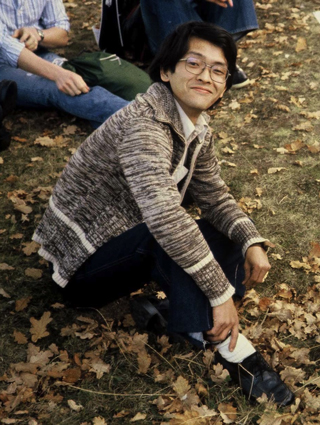 Takemi Iida, at Wakehurst Place, West Sussex, 1978
Takemi Iida, at Wakehurst Place, West Sussex, 1978
Photo: Allen Bush
Takemi Iida figures into this story. He is the reason Tony Hall and I keep in touch. Tony and I were acquaintances when I was at Kew in 1978-79 (International trainees were the lowest on the Kew totem pole) but we both shared a close friendship with Iida, a native of Japan, who was a Kew Diploma student. Iida was destined for greatness, but worked himself to death and died of a heart attack, home in Japan over fifteen years ago. The news didn’t settle well with either one of us. Tony and I have kept-up contact with one another, along with an occasional visit, to keep Takemi’s memory alive. Iida was a brilliant horticulturist who defied normal characterization. Disheveled in dress but a stickler for detail, he was precise with his hands (he enjoyed woodworking and knitting). He was self-possessed and well liked—a lover of Shakespeare, bound for tragedy.
Takemi would have loved this iris story. I can picture him, firing-up a cigarette and laughing at the obsessive foolishness that Hall will go through in order to bring this to bloom. Iris stocksii hasn’t been grown in cultivation in decades. All attempts have failed. Another Juno, Iris postii, took 12 years of coddling before flowering. Tony Hall knows it’s crazy.
It doesn’t matter. This rare species was plucked from the wild – truly wild Afghanistan. Tony might not finish the job but someone will. Piek’s prize was shared with Henrik Zetterlund from the Gothenburg Botanical Gardens in Sweden and a few other Juno aficionados. Hall knows that Iris stocksii will someday come into flower – for the first time in garden cultivation – somewhere. And Tony and I know Takemi Iida would be enjoying it all.
Rose and my friend arrived two hours later, just as I was finishing a pub lunch of cod, chips and mushy peas, on Kew Green, with Hall, at the Rose and Crown. “How’d it go?” I was asked.
“Well, there was this Iris…“
Comments
Thanks very much John. I should try Hulthemia persica (Rosa persica), but it, and its progeny, appear as scarce as hen’s teeth in the trade—most likely for reasons Mr. Lindley made clear. Maybe all it needs is the interesting black spot preventative you mentioned in your May post? I’m on the look-out to see if I can hunt one down and tame the beast. I’ll keep you posted. Heavy thunderstoms expected this morning. I don’t think that’s part of the rose’s recipe…
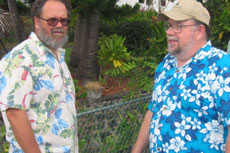

Reading this marvellous essay I was reminded of the the history of trying to cultivate the Persian Rose, Hulthemia persica. Jack Harkness quoted John Lindley of 1829: “It resists cultivation in a remarkable manner, submitting permanently neither to budding, nor grafting, nor laying, nor striking from cuttings; nor in short to any of those operations, one or other of which succeed with other plants. Drought does not suit it, it does not thrive in wet; heat has no beneficial effect, cold no prejudicial influence; care does not improve it, neglect does not injure it.”
Jack Harkness raise numerous hybrids in Hitchin in Hertfordshire in the 1970s.